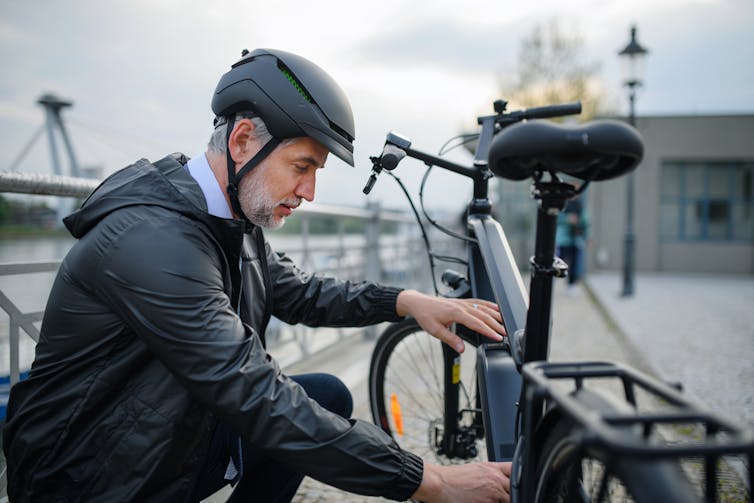Source: The Conversation – UK – By Paul Hough, Lecturer Sport & Exercise Physiology , University of Westminster

In elite sport, the phrase “past your prime” is rapidly being redefined.
At 38, Jess Fishlock just became the oldest goalscorer in UEFA Women’s Euro history. At Euro 2024, Portuguese defender Pepe made headlines not for a red card or faking injury — but for simply stepping onto the pitch at age 41, becoming the oldest player to feature in a European Championship. Fellow veterans Cristiano Ronaldo (39), Luka Modrić (38), and Keylor Navas (38) also made appearances.
And it’s not just football. Serena Williams won the Australian Open at 35 (while pregnant). Roger Federer won a Grand Slam at 36. Rafael Nadal became the oldest French Open champion at 36. Novak Djokovic, now 38, won Olympic gold in 2024 and reached the semi-finals of all three Grand Slams this 2025.
In American sports, Tom Brady retired at 45 after 23 physically punishing NFL seasons. LeBron James, at 39, is still dominating in the NBA, having won the inaugural NBA Cup with the LA Lakers in 2023.
These aren’t just feel-good stories; they reflect a growing trend. Athletes are staying competitive for longer and pushing the boundaries of peak performance. But how?
Research backs the shift. A study on Olympic athletes found that between 1992 and 2021, the average age of male Olympians rose from 25 to 27, and female athletes from 24 to 26. In football, a study of UEFA Champions League players found the average player age rose by nearly two years between 1992 and 2018.
So how are older athletes continuing to thrive in elite sport? Here are some of the key factors.
1. Smarter training
Modern athletes benefit from personalised training programmes informed by cutting-edge sports science. Tools like GPS tracking, heart rate variability (HRV), and biomarker analysis help coaches monitor performance, recovery and injury risk.
Metrics such as HRV, for example, can indicate when an athlete might need more rest, which is crucial for older athletes who take longer to recover after intense competition.
Athletes are no longer reliant on a single coach. Today, they work with integrated teams – sports scientists, strength and conditioning coaches, and performance analysts – all dedicated to improving their fitness and performance.
2. Better injury prevention and medical support
Athletes now undergo regular fitness testing and musculoskeletal screening to identify potential weaknesses before they lead to injury. And when injuries do occur, recovery methods have vastly improved.
Anterior cruciate ligament (ACL) injuries were once considered career-ending for older athletes. But thanks to advanced surgical techniques and biological therapies, recovery is now faster, and athletes return to play much sooner.
Zlatan Ibrahimović, at age 35, returned to top-level football just seven months after an ACL tear – a feat nearly unthinkable a decade earlier.
3. Optimised recovery and nutrition
Ageing athletes have different recovery needs — and sports science has stepped up. Cryotherapy, compression therapy, and advanced sleep protocols all help reduce muscle soreness and accelerate repair.
Nutrition plays a key role too. Ageing bodies experience more inflammation and slower repair, so diets rich in polyphenols (found in berries, leafy greens, and dark chocolate) are used to support vascular health and recovery. Athletes may also take approved supplements such as glucosamine and chondroitin to support joint health and slow degeneration.
The result? Older athletes can train more consistently and recover faster between games.
4. Experience and tactical intelligence
Speed and strength decline with age, but tactical intelligence often improves. Older athletes can compensate for age-related declines in physical capacity with their advanced game-reading skills and spatial awareness. For instance, footballers like Paul Scholes and Andrés Iniesta adapted their playing styles with age, relying more on positioning and passing intelligence than physical capacity.
5. Financial and legacy incentives
Today’s stars aren’t just competing for medals – they’re building brands. With massive financial rewards on offer, there’s a clear incentive to prolong careers.
Cristiano Ronaldo, for example, recently signed a two-year contract extension with Al-Nassr that will see him play until age 42 — reportedly earning an estimated £492 million. For many athletes, the chance to leave a lasting legacy and secure generational wealth keeps them in the game.
While we can’t stop the biological effects of ageing, today’s athletes are proving we can delay their impact – and even thrive later in life.
With smarter training, better recovery strategies and cutting-edge medicine, the upper age limit for peak performance continues to stretch. These advances may allow more veteran athletes to defy expectations and continue competing at the highest level.
Get your news from actual experts, straight to your inbox. Sign up to our daily newsletter to receive all The Conversation UK’s latest coverage of news and research, from politics and business to the arts and sciences.
![]()
Paul Hough does not work for, consult, own shares in or receive funding from any company or organisation that would benefit from this article, and has disclosed no relevant affiliations beyond their academic appointment.
– ref. Five ways professional athletes are redefining the limits of age in sport – https://theconversation.com/five-ways-professional-athletes-are-redefining-the-limits-of-age-in-sport-261028











